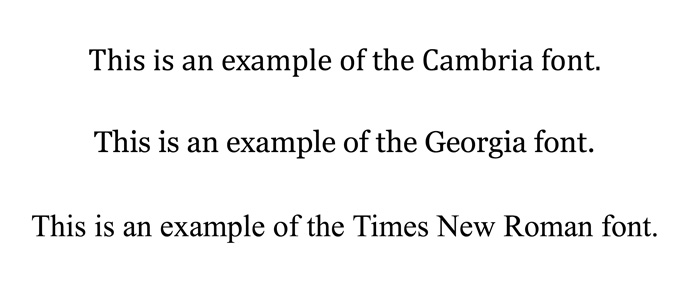
Legibility refers to how easy it is to distinguish letterforms within a font. Readability and legibility aren’t exactly the same. Since type is used to communicate a message, if that message can’t be read, the typeface has failed its job. Readability is arguably the most important feature of a typeface. The fonts on the Olivia Palermo website perfectly reinforce the brand’s high-end, elegant message. A font like Crimson Text would work much better. For example, using something modern like Open Sans on a design for a historical society website doesn’t really reinforce the message. The wrong font can completely derail the message a brand is trying to send. If the message is serious, the font should also be serious, and vice versa. The message of the project-whether it’s a slide deck or a brand’s visual identity-is vital to determining the best font to use.

(Design by Marka Network and Mustafa Akülker) Message But for fonts that might be used over multiple projects, designers should make sure the font will work in every medium in which it may be used.ĭrop Co’s font choice works across print and digital designs. If a font will only be used for a single project, then it’s easy to determine whether print or screen functionality is most important.

Fonts like Georgia that were designed specifically for readability on low-resolution screens aren’t as well-suited to print work as a font like Book Antiqua might be. Roboto is one of many typefaces that can be used at both large and small sizes effectively.įonts that are perfect for use on the web might not translate well to use in print, and vice versa. Designers should test fonts they’re considering at each size they may use those fonts to be sure they’re readable and don’t negatively impact UX. Some typefaces can look good at virtually any size, though. Typefaces that look great at small sizes in body text can sometimes look too plain or even boring when used at display sizes. Display fonts that look amazing in larger sizes can become illegible at smaller sizes. Not every typeface looks good at every weight and size. Mood boards are a great way to evaluate how typeface choices fit within the overall mood of a design. Something like Crimson Text or Helvetica would work much better. For example, using Comic Sans on a website for a law firm would clash. It’s important for designers to consider the mood of the project and how the typefaces they’re considering reinforce or clash with that mood. And like every project, every typeface has a mood. Whether that mood is formal or informal, fun or serious, modern or classic, or something else entirely. (Design by Alan Grynberg) MoodĮvery project has a mood. uses one typeface across all of their branding materials, including their logo. It can be helpful to make a list of all the potential projects a typeface will be used for at the outset of choosing a new font.

They should also think about whether the fonts will be used for a limited time or indefinitely.

A font that will only be used for a limited scope, such as a slide deck, will need to be less flexible than one that will be used across a brand’s entire visual presence.ĭesigners should think through whether the typeface will be used only for digital projects or also in print. The scope of the project or projects in which a font will be used is one of the first things designers should consider when choosing a typeface. But there are a few things designers can keep in mind to make typeface selection easier and more focused. Experimentation and practice are both important to mastering typeface selection. The right typeface can make a design, while the wrong one can definitely break it. Not surprising considering there are more than half a million fonts in existence. Others spend hours trying to figure out the right typeface for the job without ever really feeling confident in their final choice. Some designers default to using the same handful of fonts they’re comfortable with for every project. Choosing a typeface for any design project can be stressful.


 0 kommentar(er)
0 kommentar(er)
